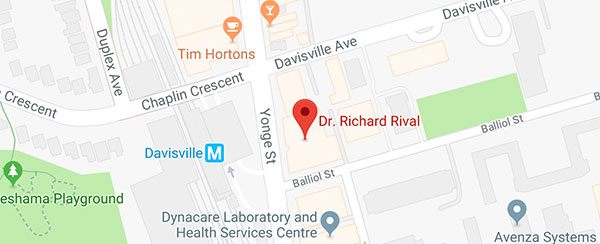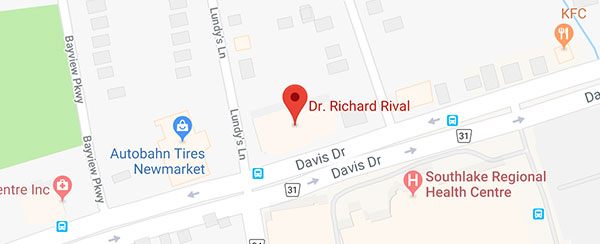Toronto Office
Dr. Richard Rival
501-1881 Yonge Street
Toronto, ON M4S 3C4
Phone: (866) 229-3223
Outside Ontario: (905) 830-6711
Monday–Friday: 9 a.m.–5 p.m.
Newmarket Office
Dr. Richard Rival
712 Davis Drive, Suite 101A
Newmarket, ON L3Y 8C3
Phone: (905) 830-6711
Outside Ontario: (905) 830-6711
Monday–Friday: 9 a.m.–5 p.m.
How to Get a Symmetrical Face Through Face Lift Surgery

If you’re wondering how to get a symmetrical face, you know that achieving symmetry will enhance your overall look and appeal. Though our faces are naturally asymmetrical, with subtle differences in the position and size of our features, some of us suffer from more irregularity than others.
When performing a facelift, your surgeon will work to create a more balanced and harmonious appearance by correcting any noticeable imbalances or asymmetries. This procedure can involve adjusting the position of the skin and underlying tissues, repositioning or resizing facial features, and other techniques to create a more symmetrical and natural-looking result. A skilled and experienced surgeon will take great care to achieve the desired level of symmetry in a facelift procedure, as this is a key factor in achieving a natural and youthful appearance.
Understanding facial symmetry
Facial symmetry refers to how similar the two sides of a person’s face are in size, shape, and position. Genetics, age, injury, medical conditions, and lifestyle factors can all affect facial symmetry. While some asymmetry is natural, severe asymmetry can cause self-consciousness. Depending on the case, plastic surgeons use various techniques to correct facial asymmetries, such as surgery, fillers, and minimally invasive procedures.
How facial symmetry is measured and evaluated
Several techniques are used to evaluate facial symmetry, including photographs, computer imaging, physical examination, and three-dimensional imaging. A plastic surgeon will use a combination of these methods to assess the degree of asymmetry and plan the best course of treatment.
The evaluation process is tailored to each patient’s specific needs, and the goal is to create a personalized treatment plan that will achieve optimal results. By using advanced technology and a personalized approach, plastic surgeons can help patients achieve facial symmetry and improve their overall appearance and self-confidence.
How facelift surgery works
Facelift surgery, or rhytidectomy, reduces sagging, wrinkles, and other signs of aging. Incisions are made around the ears and sometimes along the hairline. Underlying muscles and tissues are lifted, and excess skin is removed. Your doctor may use grafting or other techniques to enhance natural contours.
The goal of this kind of facial plastic surgery is to create a youthful appearance tailored to the patient’s needs. Recovery time and results vary depending on the extent of the procedure and the patient’s overall health.
Types of facelift surgeries
Facelift surgery comes in various types that differ in invasiveness and focus. A traditional facelift is the most comprehensive and invasive, while a mini facelift is less invasive and targets the lower face and neck. Thread lift is minimally invasive, but the results may not last long. A mid-facelift targets the cheeks and under-eye area, while a lower facelift lifts and tightens the jowls and neck.
Non-surgical facelifts use injectable fillers or laser treatments to restore volume and firmness without surgery. The most suitable facelift surgery for a patient depends on their unique needs, goals, and health, which a plastic surgeon can help determine during a consultation.
How facelift surgery can help achieve facial symmetry
Facelift surgery can enhance facial symmetry by correcting structural imbalances and sagging skin. The procedure involves lifting and repositioning underlying muscles and tissues, removing excess skin, and restoring lost volume to create a more balanced appearance.
Achieving perfect symmetry isn’t always possible or desirable, as minor asymmetries can contribute to a person’s unique beauty. However, a skilled surgeon can tailor the procedure to the individual patient’s needs and goals to achieve a natural-looking and harmonious appearance that enhances their unique features.
Preparing for facelift surgery
Preparing for facelift surgery involves several steps to minimize the risk of complications and ensure the best outcome. Your prep includes scheduling a consultation with a facial plastic surgeon, undergoing a medical evaluation, avoiding certain medications and supplements, and quitting smoking.
Patients should also arrange for help to drive them to and from the surgery center and have a comfortable recovery space at home. It’s important to follow all preoperative instructions, including fasting before surgery and avoiding alcohol and smoking after surgery. Working closely with the surgeon and following these guidelines can help ensure a successful facelift surgery with minimal risks.
Consultation with a facial plastic surgeon
Choosing a facial plastic surgeon like Dr. Richard Rival is crucial to ensure you receive the highest quality of care from a qualified and trained professional. Facial plastic surgeons have undergone rigorous certification and education standards, making them experts in plastic surgery techniques, including facelift surgery.
Dr. Richard Rival is committed to providing exceptional patient care and adheres to strict ethical guidelines. With his expertise and dedication to safety, you can trust that your facelift surgery will be performed with the utmost skill and precision, providing the best possible outcome for your unique needs and goals. Contact Dr. Richard Rival today.


Leave a Reply